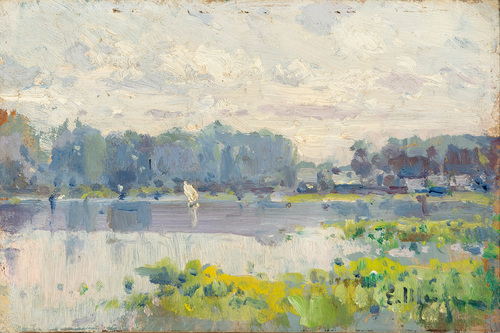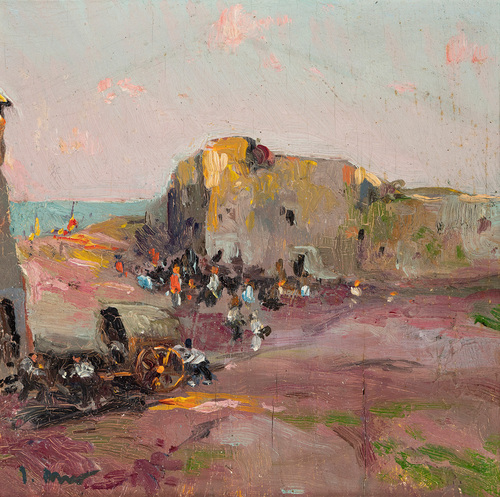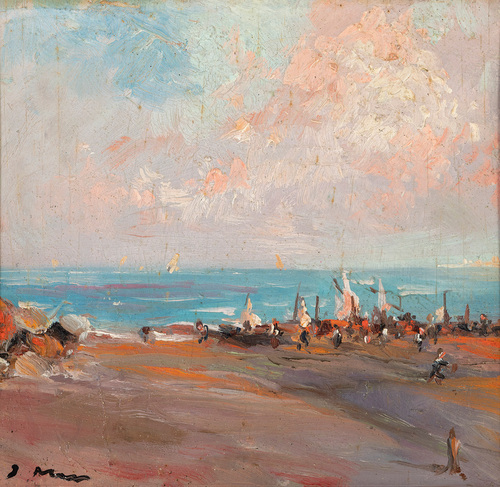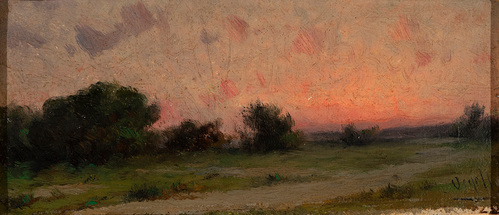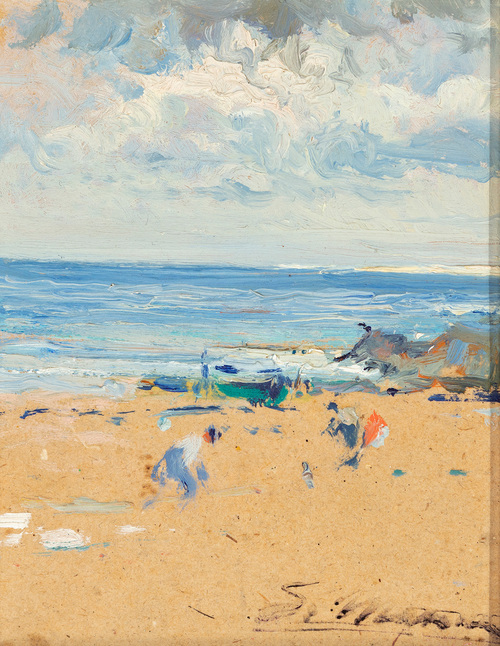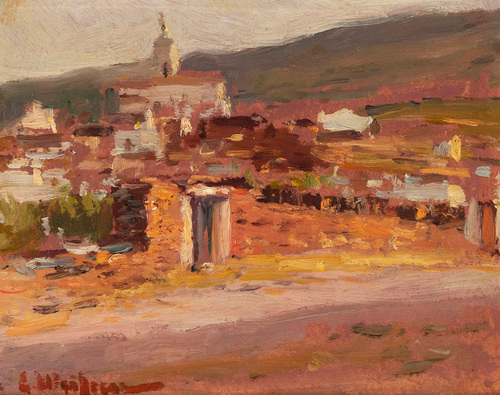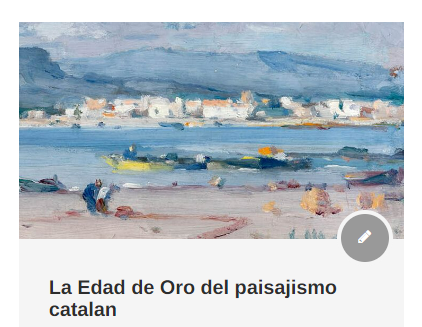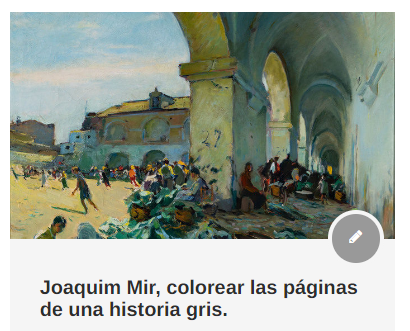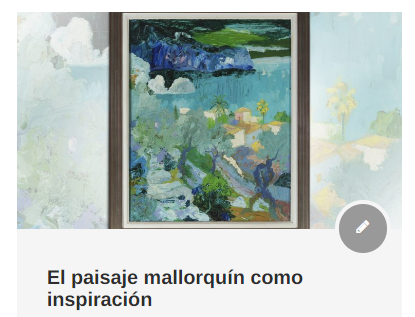Great jewels of Catalan landscaping in small format
The creative freedom that has characterized small-format production, allowing artists to deploy a level of technical precision and stylistic experimentation, has given birth to their most intimate and personal creations, whose evocative power manages to move the viewer. In the set of paintings on auction on May 8, there is an outstanding representation of Catalan landscape painting concentrated in a few centimeters of talent and creativity.
The value and significance that artists have attributed to the small format work shows us that the greatness of a work of art does not lie in its size but in its content and plastic qualities. In fact, it is in this format where we can often find the true essence of an artist’s style since these small works are born from the first idea or creative impulse and, therefore, concentrate all the strength, spontaneity and freshness that emanates from his brushes.
The entity that, thanks to painters such as Eliseo Meifrèn or Joaquim Mir, reached the Catalan landscape painting at the dawn of the nineteenth century, especially translucid in this set of small format works whose modernity and daring conquered registers unpublished until then. It was precisely through small format painting where all of them reflected more sincerely and freely the authentic emotionality of the Catalan landscape. His artistic legacy, intimately linked to the land and the sea, has reached our days as the purest and most personal expression of the unbreakable bond that unites the essence of the Mediterranean character with nature.
These small cardboards and tablets in bidding have become, in their own right, great little jewels that give us the opportunity to approach the most daring and experimental production of their authors. In this way, the scenarios that make up the Catalan geography, are transformed through this format into experiments in light and color, giving way to small frames of everyday life that, like a vivid instant, allow us to almost feel and smell the atmosphere of our beloved Mediterranean.
Since the mid-nineteenth century, when Catalan landscape painting developed as a fully autonomous genre, a stage began that would be recognized as a truly vital golden age in the renewal of a subject that until then had been relegated to the background. as a mere accompaniment to the great mythological and biblical themes. Experimenting with the new artistic trends that emerged throughout the nineteenth and twentieth centuries, landscape painting developed under a continuous evolution, whose progressive break with academic conventions led it towards the creative freedom of the so-called Modernity.
The French influence together with the demand of the new Catalan bourgeoisie, who found in art collecting a sign of prestige to reaffirm their new social status, led to the emergence of realism in Catalonia with a boom in landscape themes. The strict observation of reality and his naturalistic expression of the surrounding world was imported by Martí Alsina as a result of his trips to Paris, a city that gave him the opportunity to learn first-hand about the work of Courbet and the landscape artists of the Barbizon School.
After this first approach to European trends, we will see how, from the 1970s onwards, a more spiritual conception of landscape will emerge, which will be consolidated with the arrival of symbolism. This trend found in the work of Modest Urgell its main precursor, introducing in his landscapes an emotional and melancholic look that, rather than representing the reality of nature, intended to evoke the poetry underlying it. Imbued with a characteristic crepuscular light, his works are close to the romantic thought of the sublime, where nature, as a symbol of the values that move the world, acquires a certain divine character.
In the last decade of the 19th century, the influence of the French impressionists gradually entered the scene thanks to artists such as Eliseu Meifrèn and Segundo Matilla, who made the natural landscape their best studio. Renouncing the initial realist tendency to get rid of the mimetic description of the natural model, Meifrèn will surrender to the impressionist audacities to capture in his work an impression of nature based on the purely chromatic and luminous treatment of the landscape.
Meifrèn’s workmanship and luminous conception can be appreciated in Matilla’s compositions and his way of conceiving space and volumes by means of a loose, impastoed and precise brushstroke. With them, the forms are blurred and become pure expressive stain, where the light, worked and thought, acquires a renewed protagonism and nature a new atmospheric dimension that goes beyond the objective reality.
In the twentieth century, landscape painting reached new expressive quotas that we cannot conceive without Joaquim Mir as a key figure of Catalan pictorial postmodernism. His landscapes, sublimated and far from any objectivity, give the painting a high sensory charge that the viewer receives as a truly vivid experience. Under an overwhelming mastery of lighting effects and color, applied with vibrant brushstrokes and superimposed stains, Mir builds a reality that, reduced to its basic elements, reveals a landscape with its own soul and pulse.

